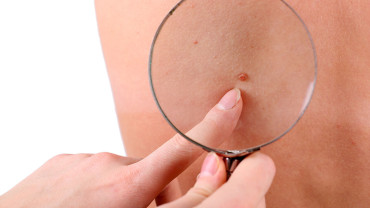Introduction to Dermoscopy
Dermoscopy, also known as dermatoscopy, is a non-invasive diagnostic technique that enhances the visualization of the skin's surface and subsurface structures. By using a dermoscope, clinicians can observe skin lesions with greater clarity, enabling them to make more accurate diagnoses. This tool is especially valuable in the early detection of skin cancers, such as melanoma, and in differentiating between benign and malignant lesions. Understanding dermoscopic patterns is crucial for clinicians as it helps in identifying skin conditions with higher precision.
The Importance of Dermoscopic Patterns
Dermoscopy Mole Evaluation in Dubai reveals specific patterns that are often invisible to the naked eye. These patterns can provide essential clues about the nature of a lesion. Recognizing these patterns is fundamental for clinicians to make informed decisions about whether a lesion is benign or requires further investigation. The ability to accurately interpret dermoscopic patterns reduces unnecessary biopsies and improves patient outcomes by enabling early intervention when necessary.
Basic Dermoscopic Structures
Before delving into complex patterns, it’s important to understand the basic dermoscopic structures that form these patterns. These include:
- Pigment Network: A net-like structure formed by pigment in the skin, typically seen in melanocytic lesions. It’s usually uniform in benign nevi but irregular in melanoma.
- Dots and Globules: Small, round structures that can vary in color. Regularly spaced and uniform dots and globules are often benign, whereas irregularly shaped or distributed ones may suggest malignancy.
- Streaks: Linear extensions that can radiate from the edge of a lesion. These are often seen in melanomas but can also be present in benign lesions such as Spitz nevi.
- Blue-White Veil: A bluish-white area often associated with melanoma, indicating deeper pigmentation and structural changes.
Common Dermoscopic Patterns and Their Significance
Understanding the most common dermoscopic patterns and their implications is vital for clinicians:
- Reticular Pattern
- The reticular pattern is characterized by a network of pigmented lines forming a honeycomb-like structure. This pattern is commonly seen in benign melanocytic nevi but can also appear in early melanoma. Clinicians should be cautious if the reticular pattern is irregular or disrupted.
- Globular Pattern
- The globular pattern features numerous round or oval structures (globules) within the lesion. This pattern is often observed in growing nevi, particularly in children. However, irregular or unevenly distributed globules may suggest a malignant transformation.
- Homogeneous Pattern
- A homogeneous pattern shows a uniform color and structure without any discernible network, dots, or streaks. This pattern is typical in benign lesions like seborrheic keratoses but can also be seen in melanomas, making context and clinical correlation essential.
- Multicomponent Pattern
- The multicomponent pattern includes a mix of various dermoscopic structures, such as reticular, globular, and homogeneous areas within a single lesion. This pattern is often associated with melanoma, especially when the different components are asymmetrical or vary significantly in color and shape.
- Starburst Pattern
- The starburst pattern is characterized by radial streaks or projections extending from the periphery of a lesion. This pattern is commonly seen in Spitz nevi, which are typically benign. However, clinicians should monitor these lesions for changes, as they can occasionally transform into melanoma.
- Cobblestone Pattern
- The cobblestone pattern features closely packed, round globules resembling cobblestones. This pattern is typical of benign dermal nevi. It is a reassuring pattern when the globules are uniform in size and color.
- Parallel Ridge Pattern
- The parallel ridge pattern, observed on acral surfaces (palms and soles), consists of parallel pigmented lines on the ridges of the skin. This pattern is highly specific for melanoma on acral surfaces and warrants immediate further investigation.
Challenges in Dermoscopic Pattern Recognition
While dermoscopy is a powerful tool, interpreting dermoscopic patterns can be challenging, particularly for less experienced clinicians. Variability in patterns, overlap between benign and malignant features, and the influence of external factors such as lesion location and patient skin type can complicate diagnosis. Continuous education, practice, and the use of digital tools that compare dermoscopic images with a database of known patterns can enhance diagnostic accuracy.
Integrating Dermoscopy into Clinical Practice
To effectively integrate dermoscopy into clinical practice, clinicians should:
- Develop Proficiency: Regular use of a dermoscope and participation in dermoscopy training courses can build confidence and skill in recognizing patterns.
- Use a Systematic Approach: A structured approach to examining lesions, considering patient history and lesion characteristics, can improve diagnostic accuracy.
- Document and Monitor Lesions: Photographing and tracking changes in lesions over time can help in identifying significant changes that warrant further investigation.
- Collaborate and Consult: Collaborating with dermatologists or using teledermoscopy services can be invaluable, especially in challenging cases.
Conclusion
Understanding and recognizing dermoscopic patterns is an essential skill for clinicians in diagnosing skin lesions accurately. By familiarizing themselves with basic dermoscopic structures and common patterns, clinicians can improve their diagnostic capabilities, reduce unnecessary interventions, and ultimately provide better patient care. While challenges exist in pattern recognition, ongoing education and practice can enhance proficiency and confidence in using dermoscopy as a diagnostic tool. As dermoscopic technology advances, it will continue to play a pivotal role in dermatology, aiding in the early detection and treatment of skin conditions.





Comments